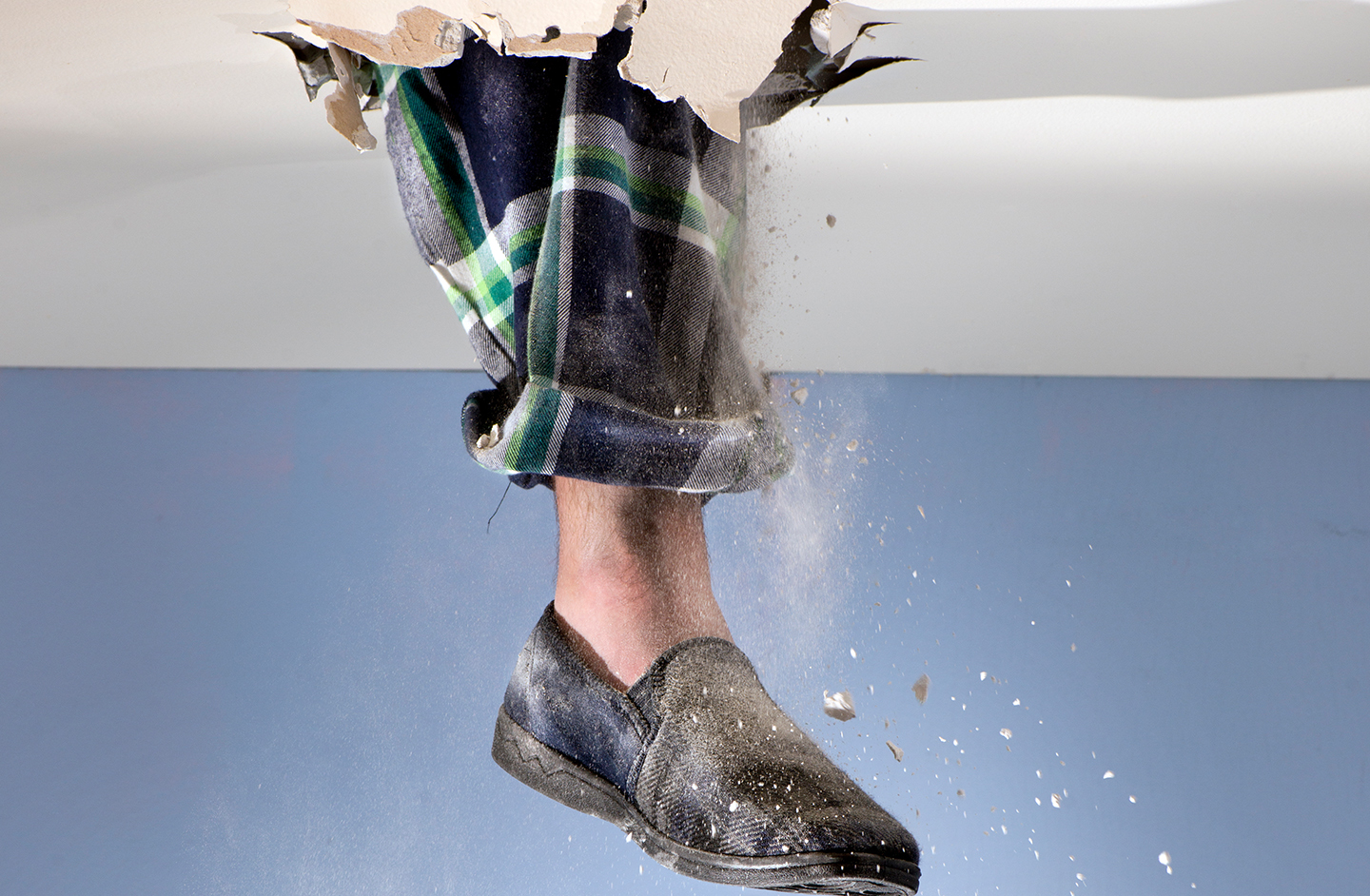Deposits are an important part of a tenancy: they protect the landlord from the costs of property damage or unpaid rent, and the tenant is able to show financial commitment.
There is strict legislation for the handling of deposits, with harsh penalties for failure to comply. Let’s start with the basics of security deposits.
A security deposit is an amount of money taken from the tenant as security for unpaid rent, damages or unsatisfactory cleaning at the end of the tenancy. A landlord can make reasonable deductions from a deposit but they must be proportionate, written in the tenancy agreement as reasonable deductions and supported by an inventory in order to make a successful claim.
- An unprotected deposit is a breach of the law, if a tenant finds out their deposit isn’t protected they can request it be returned- leaving landlords open to no financial protection for unpaid rent/ damages etc.
- A tenant can take a landlord (or agent, depending on who is responsible for registering it) to court and the judge can award a penalty (which goes to the tenant) between 1 and 3 times the deposit amount.
- The above applies for late protection of a deposit, although a judge may be more lenient when it comes to inexperienced landlords.
- A Section 21 eviction notice cannot be served if the deposit isn’t protected. Also note, if the deposit is protected late then it must be returned in full to regain the right to serve a Section 21 notice.
Damage

Property can be damaged deliberately or carelessly by tenants, which would result in a successful claim with full evidence. But there’s more of a grey area when it comes to other types of damage, particularly fair wear and tear. This ambiguous phrase essentially means that any minor marks, scratches or discolouring to fabric at the end of a tenancy (particularly a long one) cannot be charged for as it would have occurred if the homeowner was living in the property i.e. fair wear and tear.
Here is some of the most common damage you would find at the end of a tenancy:
Dirty or damaged flooring
Despite a professional clean carpets or wooden flooring may still look tired at the end of a tenancy. It’s hard to claim off the deposit for this unless the tenants have severely stained the flooring, burnt it or ripped it with a sharp object.
Damage to kitchen top
If your tenants have been doing some chopping without the board and the top has significant damage to it – i.e. more than just a few cuts here and there – then they will have to pay for a replacement. If there is minor damage this would be viewed as wear and tear.
Enamel chips to the bathroom furniture
This is not wear and tear. If the tenants have been careless enough to chip the enamel down to the metal then a ‘bath doctor’ will be needed to patch it and the cost deducted from the deposit.
Blocked drains
It’s important to establish whether the tenant has been misusing the drains, such as pouring animal fats or flushing items that can cause blockages, to decide who will need to pay for unblocking them. Most commonly, a landlord will pay for unblocking drains but this might change if it happens repeatedly during the same tenancy.
Wall plaster damage
Minor scuffs, scrapes and bashes come under ‘wear and tear’ but if the plaster damage is clearly negligent or intentional then the repair cost can be claimed.
Broken white goods
Even if white goods break down because your tenants fail to maintain them properly (i.e. put salt in the dishwasher reservoir) it’s still hard to claim it as ‘damage’. This is mainly because it’s very hard to prove negligence.
Damaged electrical fittings
At home it is unusual for sockets, light fittings and switches to break unless they are hit with a hard object so any damage to these can most likely be deducted off the tenant’s deposit.
Holding deposits
Along with security deposits, you can also take a holding deposit. A holding deposit is essentially a show of good faith, from both sides. The tenant is showing some financial commitment and demonstrating that they're likely to pass the application process and referencing. And you, as the landlord, are guaranteeing that you will not show any other applicants round the property whilst the application is in process, and cancel any future viewings. Holding deposits generally equate to 1 weeks’ worth of rent, and this will be capped at 1 week when the fee ban comes into force (anticipated late 2018/ early 2019).
How is a holding deposit different from the security deposit?
A holding deposit is paid by the tenant when they've viewed the property and filled in the formal application forms. A holding deposit does not need to be registered with a government scheme, this only applies to security deposits.
Usually, a holding deposit is non-refundable if a tenant withdraws their offer but this is down to the landlord's discretion. A holding deposit should not be held as money for you to keep in addition to other move-in funds. You should provide written information, along with a receipt, to the tenant about the holding deposit making it clear; .
- If the holding deposit will be returned once they move in or if it will be deducted from the rent fees and tenancy deposit paid as part of the move-in funds.
- If there are any circumstances where the deposit will not be refunded (i.e. failed references due to giving false information, tenants deciding not to go ahead)
Once referencing has been completed, the holding deposit amount should be deducted from remaining payments for referencing, first month's rent and security deposit. For example;
- Referencing and admin fees: £75
- First month's rent: £1200
- Security deposit: £1650
- Total= £2925
- Minus holding deposit: £300
- = £2625 remaining to pay
The holding deposit is not an amount that you can keep; it must be deducted from the move-in costs once the application is successful. Alternatively, you can request the full move-in funds and then return the holding deposit in one lump sum when the tenant has moved in.
Under the Accommodation Agencies Act 1953, it is a criminal offence to take a deposit or fees from a tenant if it does not relate to a specific property, which is why the holding deposit is paid when the tenant fills in the application forms. If you, as the landlord, decide not to go ahead with the tenants but they have satisfactorily passed references or given accurate information then you must return the holding deposit to them.
The application form, or a separate written document, should detail how much was paid as the holding deposit and the circumstances where it would not be returned to the prospective tenants. This document should ideally be signed to show the tenant's agreement to the terms.
So essentially, taking a holding deposit at the start of the application process shows that the prospective tenant is serious about their application (by paying a substantial amount of money they wouldn't want to lose) and you are making a commitment to them that you will not show any other applicants round the property. And, it's a great way to start a professional tenancy and avoid being messed around, potentially losing rental income, by applicants that are not serious about your property.
Deposit Insurance Schemes
You may have read recently about a new way for landlords to protect their buy-to-let properties from damage and unpaid rent, and to make it easier for tenants to pay for it. Or perhaps you haven’t, considering our recent survey revealed that 91% of landlords and 92% of tenants hadn’t heard of the new scheme. The scheme operates by offering tenants monthly premiums paid in lieu of a deposit. These are much lower than an upfront deposit amount and would still protect the landlord from loss of rent or damage. Currently, a tenant will pay the equivalent of between 4-6 week’s rent to a landlord, which is held in a government-approved scheme to protect against losses incurred during the tenancy.
With the national average asking rent at £789 (from Rightmove data), this means tenants are paying as much as £1092 in tenancy deposits, or a whopping £2658 in London where average rents are £1920. Although tenants receive their deposit back at the end of the tenancy, minus any deductions for damage or unpaid rent, their deposit is largely tied up for the entire time they are renting.
Our survey also revealed that 35% of landlords didn’t think an insurance scheme was a better than paying a deposit, whilst 35% of tenants thought it was. However, 47% of landlords and 45% of tenants weren’t sure- showing the need for more information needing to be available for insurance scheme options.
We also found a disparity between landlords’ and tenants’ opinions over the difficulty of tenants raising a deposit previously- 57% of landlords said tenants hadn’t had issues whilst 55% of tenants said they had. An overwhelming 87% of landlords said they would be concerned that an insurance scheme wouldn’t cover damage or unpaid rent. 62% of tenants said they wouldn’t have an issue with a monthly insurance payment compared to a lump-sum deposit.
Landlords may be concerned that such a small amount, compared to a one-off deposit, won’t protect them for loss. They may also be concerned about a tenant’s affordability if they haven’t got savings for a deposit. On the other hand, landlords could find that with more tenants able to afford low monthly payments rather than a large deposit, they have a greater number to rent their property to. It also means they are free from compliance with the deposit scheme legislation. Tenants may be concerned that the monthly premium they pay is money they won’t be getting back, although overall it will cost much less. Many tenants can afford monthly payments but are unable to save a significant amount as a deposit- an amount that many tenants won’t be able to utilise until they buy their first property.
It’s clear there is a need for these schemes to clarify how it would work- putting landlords at ease that they would be covered to the same level of a one-off deposit, and tenants reassured that the monthly payments are low enough to outweigh the downside of not receiving their deposit back.
Inventories

If you’re taking a deposit, you’ll need an inventory. You may be tempted to skip this additional expense but if you do, you can forget being able to make valid claims from the deposit. In the event of a deposit dispute, you will be required to provide thorough evidence to the adjudicator and without a well-recorded, professional inventory, they cannot accept claims.
Although you can, we’d advise against drawing up your own inventory as it could be seen as bias and you may not know the correct way to record the property condition. A professional report, compiled by an independent third party, will help to avoid any misunderstanding with tenants and provide solid evidence if you do end up in a legal dispute.
Inventories are made up of 3 parts:
The 'Make'
Don’t leave it until the last minute to arrange an inventory as you’ll need to give yourself time to read through the report to make sure it’s accurate. A good inventory clerk might spot defects you hadn’t noticed, such as a missing radiator valve or wobbly door handle, so ideally you should leave enough time to put these right before the tenant moves in. The inventory will include any outside space such as a balcony or garden. This is important, especially if you’re expecting the tenant to maintain these.
The Check In
The inventory will be used to prepare a check-in report at the start of the tenancy. This will include a ‘schedule of condition’ listing any existing damage. If you are short of time, this can be done at the same time as the inventory make itself. It’s also cheaper if you book the inventory make and a check-in together.
The check-in report also includes remarks on the cleanliness of the property as this is one of the most common areas of dispute between landlords and tenants. There are, it seems, many different interpretations of the word ‘clean’!
You should get the tenant to sign a copy of the check-in report to confirm they accept it’s accurate, but if this isn’t practical you should tell them, in writing, to let you know of any discrepancies within seven days of the start of the tenancy.
The Check Out
When the tenant moves out, you should arrange for a separate check-out report, then you compare the two to see what, if anything, to deduct from their deposit. You should invite the tenant to be present when the clerk compiles the check-out report, however it isn’t absolutely essential for them to be there as you can ask the clerk to send both you and the tenant a copy.
One of the advantages of using an independent inventory clerk is that they will mark on the check-out report whether any deterioration is beyond normal wear and tear and whether they consider any damage or deterioration to be the landlord’s or the tenant’s responsibility. This should make it easier to decide what, if anything, to deduct from the deposit.
To avoid any nasty surprises when the tenant moves out, it’s advisable to carry out regular inspections of your property throughout the tenancy, preferably every three months. Don’t worry if you think this is a lot of hassle, Upad can arrange inventories, check-ins and check-outs on your behalf and if you can’t visit your property we can even arrange regular inspections too.
Disputes
If you heed the above advice on inventories, you hopefully won’t need to enter into a deposit dispute. But they can occur when tenants are not happy with proposed deductions or dismiss your claims of damage- always make sure you are fair and reasonable in your costs and try to negotiate with the tenant to come to an agreement.
Firstly, the circumstances where all or part of the deposit can be withheld should be clearly explained in the Tenancy Agreement. Make sure it’s signed by both you and your tenant at the start of the tenancy and always ensure that the terms are fair and reasonable. In a broad sense, you can claim deposit deductions for:
- Outstanding rent
- General Maintenance
- Repairs and damage to the property beyond what is deemed to be fair wear and tear
Always remember that the law is clear: the deposit is the tenant’s money and they can expect it back at the tenancy end, so you need to provide evidence to support your claim to keeping all or part of the deposit money. An independent adjudicator will review all the evidence and make a decision based on what’s been provided.
For example, it’s up to you as the landlord to prove that there is a valid reason for a carpet clean because of a wine stain, so evidence you should provide should include a check in inventory and a comparable check out report that details the stain, photographs to visualise it, cleaning receipts and quotes from other cleaners that prove what you paid, and claim on the deposit, are both fair and proportionate.
In the event of a deposit dispute, there are certain things you can’t claim for, these include:
- More than the deposit amount- The Scheme’s is limited resolving disputes up to the protected deposit amount, so if you want to claim more then you need to use the Court.
- Costs related to the preparation of a dispute- It’s not possible to claim for any time you spend gathering and submitting evidence to the dispute process.
- Betterment- You can only claim for an amount that would put the property back in the same, and not better condition than it was originally.
- Fair wear and tear– You must take into account the length of the tenancy, the age and quality of items/areas, its condition at the start and the number and type of occupants.
Deposits needn’t be a tricky area but you must remember to follow the basic steps:
- Take a holding deposit from a tenant to secure a property subject to contract and referencing, but remember it must be refunded once they move in
- Register a security deposit within 30 days of receiving the funds and serve the certificate and Prescribed Information within the same timeframe.
- Make sure to get a professional, third party inventory carried out upon check in and check out
- Remember to account for fair wear and tear
- Consider the use of a deposit insurance scheme to appeal to more tenants





 There is strict legislation for the handling of deposits, with harsh penalties for failure to comply. Let’s start with the basics of security deposits.
There is strict legislation for the handling of deposits, with harsh penalties for failure to comply. Let’s start with the basics of security deposits.



